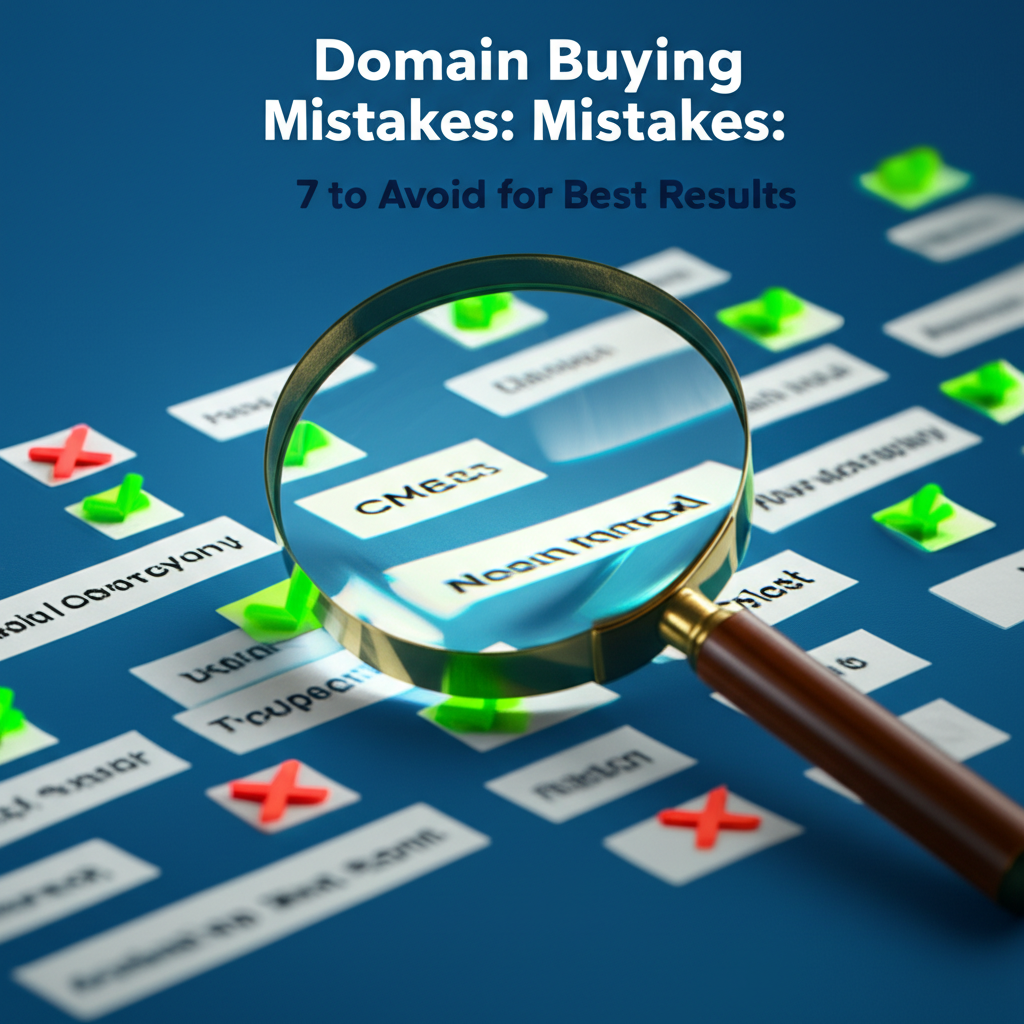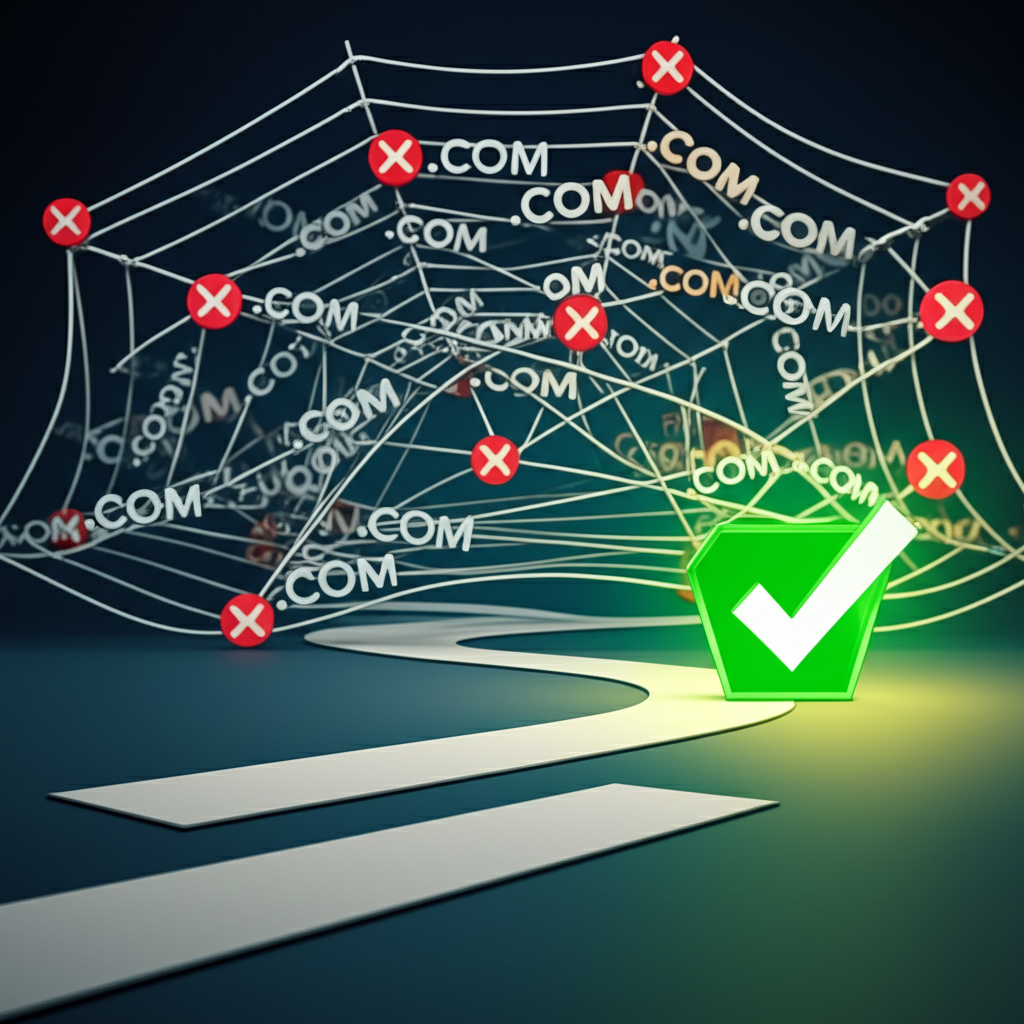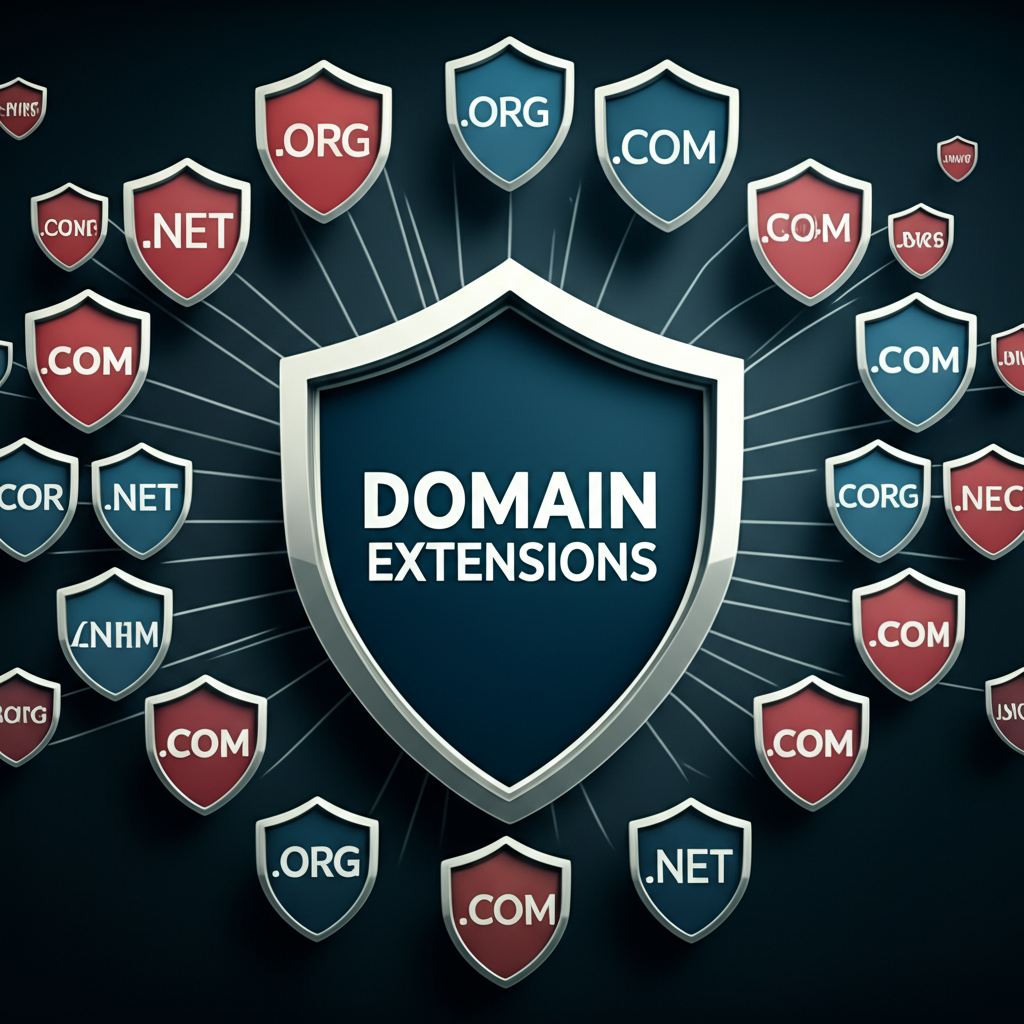- Common Domain Buying Mistakes That Can Cost You
- Avoiding Domain Buying Mistakes: Best Practices for Success
Domain Buying Mistakes: 7 to Avoid for Best Results
Domain buying can be a tricky business. Picking the perfect domain name is crucial for online success, whether you’re launching a business, starting a blog, or creating a portfolio. But the excitement of finding an available domain can sometimes lead to hasty decisions and costly mistakes. Avoiding these pitfalls can save you time, money, and future headaches. This article will outline seven common domain buying mistakes and how to avoid them for the best possible results.
Common Domain Buying Mistakes That Can Cost You

Choosing the right domain is like laying the foundation for your online presence. Making the wrong choice can limit your reach and impact your brand’s growth. Let’s delve into the seven most common domain buying mistakes:
1. Ignoring Keyword Research:
While exact-match domain names are no longer essential for SEO, relevant keywords still hold value. Neglecting keyword research can mean missing out on valuable organic traffic. Before purchasing a domain, research relevant keywords related to your niche or industry. Incorporating a primary keyword or a close variant can boost your search engine visibility and attract the right audience. Tools like Google Keyword Planner, Ahrefs, and SEMrush can help you identify relevant keywords with high search volume.
2. Choosing the Wrong Domain Extension:
While “.com” remains the king of domain extensions, there are now a plethora of options available. Choosing the wrong extension can confuse your audience and limit your credibility. While niche extensions like “.photography” or “.blog” can be suitable for specific purposes, “.com” is still generally preferred for its widespread recognition and trust. If your desired “.com” is unavailable consider “.net” or “.org” as reputable alternatives. Avoid less common extensions unless they specifically align with your brand and target audience.
3. Overlooking Domain History:
Buying a used domain might seem like a cost-effective option, but it can carry hidden baggage. A domain with a spammy or penalized history can negatively impact your SEO efforts and even lead to blacklisting. Before purchasing a pre-owned domain, thoroughly investigate its history using tools like Wayback Machine and check its spam score with services like Moz. Understanding a domain’s past can save you from inheriting unwanted problems.
4. Not Checking for Trademark Infringement:
Enthusiasm can sometimes lead to overlooking legal considerations. Choosing a domain name that infringes on an existing trademark can result in legal battles and force you to relinquish your domain. Before settling on a name, conduct a thorough trademark search to ensure you’re not stepping on any toes. This can save you significant legal costs and protect your brand’s reputation.
5. Buying a Domain That’s Too Long or Difficult to Spell:
A long, complicated, or hyphenated domain name is a recipe for user frustration. Difficult domains are harder to remember, prone to typos, and less shareable. Aim for a short, memorable, and easy-to-spell domain name. This improves user experience and contributes to a stronger brand identity. Consider how the domain sounds when spoken aloud to ensure clarity and avoid confusion.
Avoiding Domain Buying Mistakes: Best Practices for Success
6. Neglecting to Secure Variations and Misspellings:
Typos happen. Failing to secure common misspellings or variations of your domain name can leave you vulnerable to cybersquatters and divert traffic away from your site. Consider registering common misspellings and variations of your chosen domain to protect your brand and ensure users reach your intended website.
7. Not Considering Long-Term Goals:
Your domain name should be a long-term investment, reflecting your brand’s vision and potential for growth. Choosing a domain name that limits your future expansion or pivots can hinder your progress. Think about your long-term goals and choose a domain name that is flexible enough to accommodate them. Avoid niche-specific names if you anticipate expanding your offerings in the future.
By understanding and avoiding these common domain buying mistakes, you can lay a solid foundation for your online presence. Careful planning and thorough research are key to securing a domain name that serves your brand’s needs and sets you up for long-term success. Taking these precautions will ensure your domain works for you, not against you, as you build your online presence.















Leave a Reply